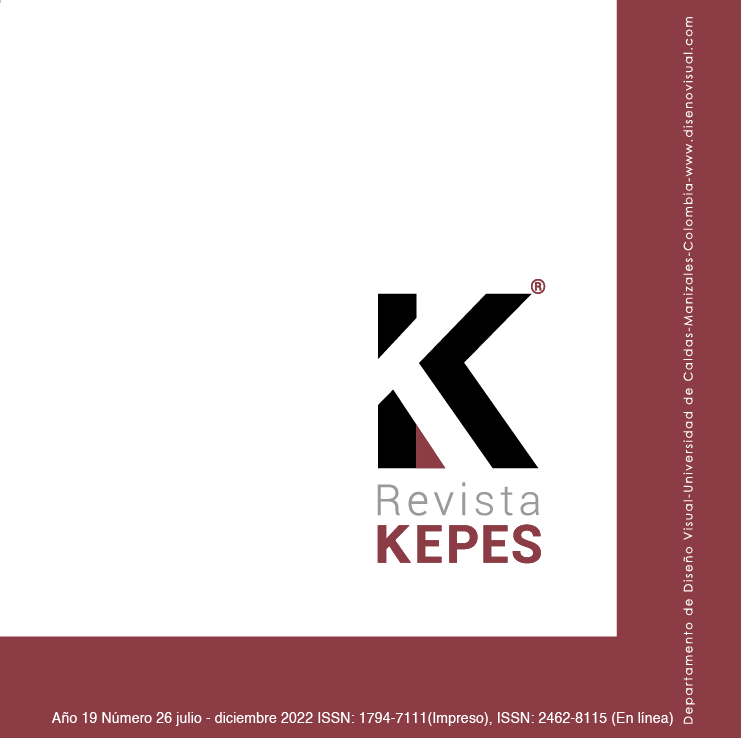Authors
Abstract
This article collects the learning experiences carried out in the subjects of Audiovisuals in the 1st year and Audiovisual Projects in the 4th year in the Fine Arts degree at Universidad de Granada, Spain. The proposed objective is to compose a digital experimental sound piece (or sound collage) starting from a previous recording that is related to a physical and daily action. The increased use of virtual tools in times of pandemic will be taken into account to
be introduced as work materials. Daily action is defined as the recording of an event that occurs during daily life. This event is given by a series of images that shape to said action, carrying out the complex exercise of translating visual activity into the design of a sound experience. It is intended to detect the relevance and the different meanings of the image that coexist in our digital society attacked by the massive visual information given out by the media, the multiple messages in the public space and the electronic devices. Once the sound exercise to be designed has been defined, between the chosen action and the analysis of its visual narrative, the student will delve into the different discourses of these images through sound practice. Therefore, it
will be important to reflect on the procedure to follow to move from the visual imaginary to a soundscape. The practice of sound art makes it possible to understand the multiple readings of the contemporary image once its theoretical, creative foundations and artistic references are assimilated and help future creators to produce original interpretations of current visual culture taking into consideration the lack of “techno-literacy” of the new
generations by the indiscriminate, daily and automatic usage of electronic devices.
References
Barrios, G. y Ruiz, E. (26 de marzo de 2009). Murray Schafer. Archivo Sonoro. https://www.archivosonoro.org/archivos/murray-schafer/
Cappa, C. (1962, 18 de abril). Michael Noll. Archivo del Proyecto IDIS. https://proyectoidis.org/michael-noll/
Carrillo, A. (2005). La teoría mcluhaniana de la percepción. A Parte Rei: revista de filosofia, 37. http://serbal.pntic.mec.es/~cmunoz11/carrillo37.pdf
Ediriwira, A. (14 de octubre de 2014). The pioneering women of electronic music: an interactive timeline. The Vinyl Factory. https://bit.ly/3Pf2MOx
Edwards, D. (2008). Artscience. Creativity in the post-Google Generation. Harvard University Press.
El ruido y la música. Una historia de la música del siglo XX; del futurismo al punk. (marzo de 2013). Pierre Schaeffer y la «musique concrète». https://bit.ly/3QqmJ6c
Facultad de Bellas Artes de la Universidad de Castilla-La Mancha. (1996). El arte de los ruidos. Manifesto futurista. Revista sin título, nº 3. https://bit.ly/3SCPK08
Facultad de Bellas Artes de la Universidad de Granada. (2021). Guías docentes de las asignaturas Audiovisuales y Proyectos Audiovisuales del Grado en Bellas Artes. https://bit.ly/3vV2d5D; https://bit.ly/3BWJtqo
Friedman, K. (1998). Fluxus and Company. En The Fluxus Reader (pp. 237-253). Academy Press, John Wiley and Sons. https://monoskop.org/File:Friedman_Ken_ed_The_Fluxus_Reader.pdf
Goldsmiths. University of London. (2022). Professor John Levack Drever. https://www.gold.ac.uk/music/staff/drever/
Harris, C. (1999). Art and Innovation. The Xerox PARC Artist-in-Residence Program. The MIT Press.
Higgins, D. (1966). Statement on Intermedia. http://www.artpool.hu/Fluxus/Higgins/intermedia2.html
Kay, A. (2006). The Dynabook revisited. A conversation with Alan Kay. The book & the computer online symposium. http://www.squeakland.org/resources/articles/article.jsp?id=1007
McLuhan, M. (1996). Comprender los medios de comunicación. Las extensiones del ser humano. Paidós.
McLuhan, M. & McLuhan, E. (1999). Laws of Media. The New Science. University of Toronto Press.
McLuhan, M. & Powers, B. (1989). The Global Village. Transformations in World Life and Media in the 21st Century. Oxford University Press.
Medina, C. (2009). Intrahistoria, cotidianidad y localidad. Atenea, 500, 123-139.
Museu d’Art Contemporani de Barcelona. (2022). La anarquía del silencio. John Cage y el arte experimental. https://bit.ly/3zMBIAm
Ohlenschläger, K. y Rico, L. (2006). Digital Transit. Revista a mínima. http://aminima.net/wp/?p=535&language=es
Oliveros, P. (2019). Deep Listening. Una práctica para la composición sonora. Edictoràlia.
Shanken, E. (2002). Art in the Information Age: Technology and Conceptual. Leonardo, 35(4), 433-438. http://www.leonardo.info/isast/articles/shanken.pdf
School of Communication Simon Fraser University. (n.d.). The World Soundscape Project. The Sonic Research Studio & World Soundscape Project. https://www.sfu.ca/~truax/wsp.html
Tornero, P. (2012). Tecnologías de la creatividad: conexiones entre arte y ciencia en la contemporaneidad (Tesis Doctoral). Universidad Complutense de Madrid.
Unamuno, M. (1902). En torno al casticismo. https://bit.ly/3BV3rBQ

 PDF (Español)
PDF (Español)
 FLIP
FLIP






















